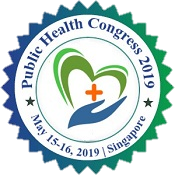
Edith K Bannerman
University of Health and Allied Sciences, Ghana
Title: Risk Factors of Metabolic Syndrome among Middle Aged Adults In The Kpando Municipality: A Case-Control Study.
Biography
Biography: Edith K Bannerman
Abstract
INTRODUCTION AND OBJECTIVES: Metabolic syndrome (MetS) which previously was relatively uncommon among Africans south of the Sahara, is increasingly becoming a public health concern in recent times. It refers to the co-occurrence of several known cardiovascular risk factors, including insulin resistance, obesity, atherogenic dyslipidemia and hypertension. This study’s intent was to determine the prevalence of MetS, its components and compare the dietary diversity of cases and matched controls.
METHODS: An age to sex one-to-one case-control study, involving 152 middle aged adults aged 45-65 years was conducted. Metabolic syndrome was determined by both World Health Organization (WHO) and International Diabetic Federation (IDF) criteria. Anthropometry, lifestyle habits, physical activity and dietary diversity were assessed. A t-test and chi-square test were used to compare continuous and categorical variables respectively between the two groups and odds ratio to determine the association between risk factors and metabolic syndrome.
RESULTS: The overall prevalence of MetS by the WHO and IDF criteria was 34.2% and 44.7% respectively. The prevalence was found to be higher in cases (67.1%) than in controls (1.3%) with just a few cases (32.9%) being able to control their metabolic syndrome status. Comparing cases to controls, high central obesity (98.7% vs 36.8%), high BP (90.8% vs 2.6%), and high FBG (72.4% vs 1.3%) were observed. Consumption of highly diversified diets was higher among controls (77.6%) compared to cases (10.5%), just like consumption of moderately diversified diets (case: 82.9% vs. controls: 19.8%).
CONCLUSION: A third (WHO criteria) to almost half (IDF criteria) of the study participants had MetS. The triad of high central obesity, high BP and high FBG were mostly responsible for MetS in this study population. Protective health effects can be obtained from reducing/maintaining

